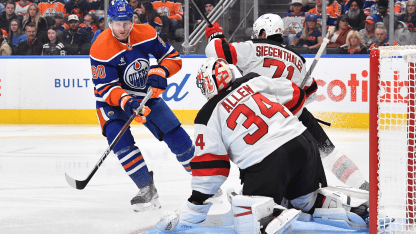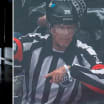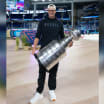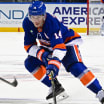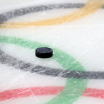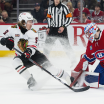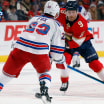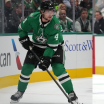When Stuart Skinner told reporters early this season that he had focused on improving his skating during the offseason, it was hard to know exactly what the Edmonton Oilers goalie meant, because even among his peers the definition can vary.
Goalie skating can look a lot different depending on which goalie you ask.
Sure, there are the staple skating patterns in and around the crease most would identify as part of it, but the only absolutes are goalie skating doesn’t resemble traditional power skating up and down the ice; unlike those hunched-over strides, goalies are trying to keep their upper body elevated as they move. It continues to evolve on a seemingly constant basis, and is increasingly important as offensive attacks become more dynamic.
“I think skating is one of the most important things for goalies,” Dallas Stars goalie Jake Oettinger said. “If you can be a good skater, that's a great foundation for any goalie. That's not really power skating, but I think goalies have an extra emphasis on that. If you can be a good skater, you can beat plays on your feet and be a step ahead, so skating is something I still work on every day. It's a big foundation, I think, of every good goalie.”
So did Skinner mean goalie skating in the most commonly practiced sense of crease-movement patterns, a variety of pushes and stops around the blue ice?
This mixture of T-pushes and shuffles is designed to mimic the most common paths goalies take while following the puck around the defensive zone or back to their posts off the rush and is a staple of most warmups and work with a goaltending coach right up to the NHL and the first thing that came to mind for most goalies asked about skating.
“We're big believers in skating in our creases and doing a lot of crease work,” Eric Comrie said of the drills he does with Winnipeg Jets playing partner Connor Hellebuyck and goaltending coach Wade Flaherty. “It's very, very basic, very simple things that you do 100 times a game. You look at my game or Connor's game, we don't have a lot of that flow in our [game] really. We're more just, ‘set to our spot, set to our spot, set to our spot,’ so it's about making sure your movements are sharp, making sure you're quick, making sure you're changing directions really quickly, and it keeps you confident to stay on your feet a little longer because it builds a lot of confidence on your feet.”
Or did Skinner mean goalie skating in terms of moving while down on the knees, an ability to get around the ice without getting back up from a butterfly and to your skates, one that has evolved well beyond the early side-to-side sliding, with goalies using their heels and toes to swing and steer themselves around and into their posts like a hovercraft?
These types of movements from the butterfly are often a part of crease-movement patterns as goalies add butterfly drops to those routines, and then recover from their knees either by pushing into a slide or back up to their skates while T-pushing to the next spot. But they’ve also become increasingly dynamic as goalies and coaches worked to find new ways to get back into position, often using the post as an anchor, even when caught outside the blue ice, allowing some to move almost as well from their knees as they do their skates.
Seattle Kraken goalie Philipp Grubauer identified traditional crease patterns as the first thing that comes to mind when he thinks of skating, with a focus on mechanics like, “how you hold your gloves so when you move you are not arms and limbs going everywhere.” But as offense has evolved, so too have the requirements for how a goalie moves.
“There are different ways to get from point A to point B,” Grubauer said. “You're not always going to get there on your feet. Sometimes you are late to a play, and making up for that lateness you need to have different tools in your toolbox to use, and I think working on different stuff before the team practices can help a lot of goalies.”
New Jersey Devils goalie Jake Allen was an early adopter of this adaptive skating from the knees during his time with the St. Louis Blues and goalie coach David Alexander.

